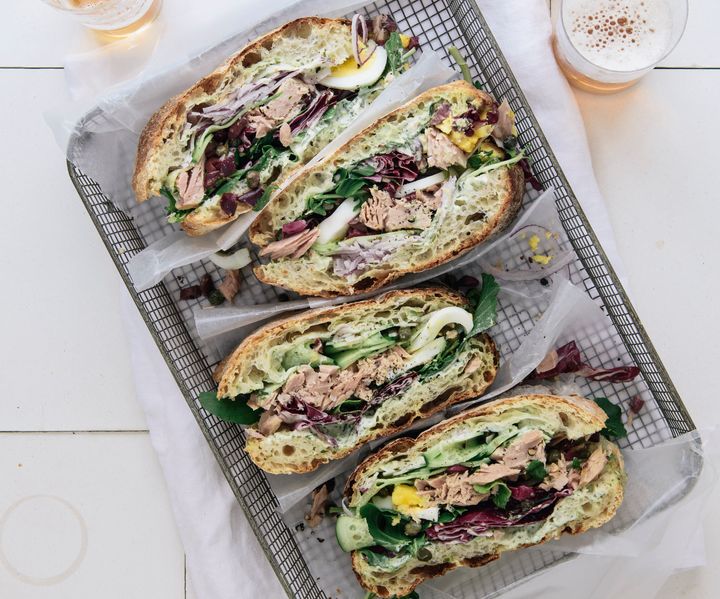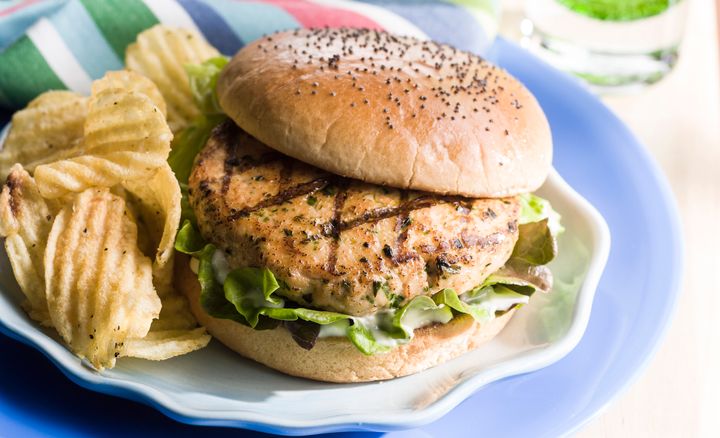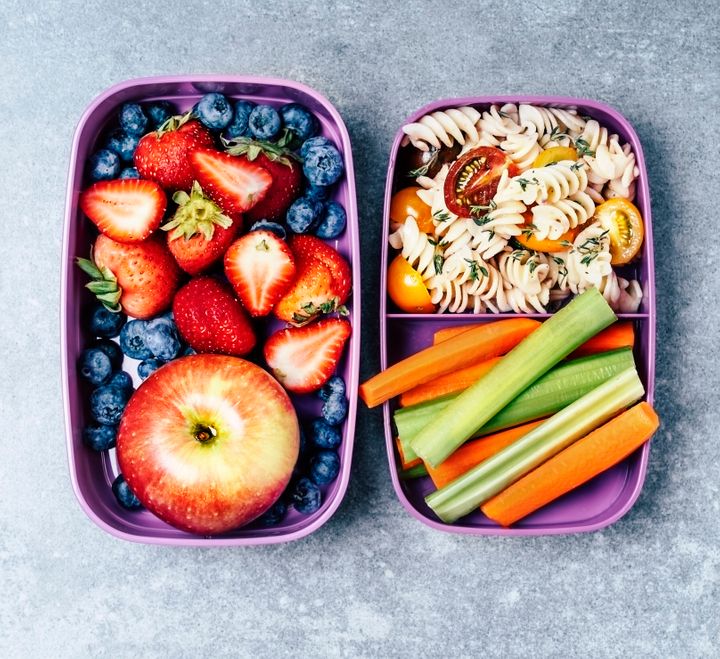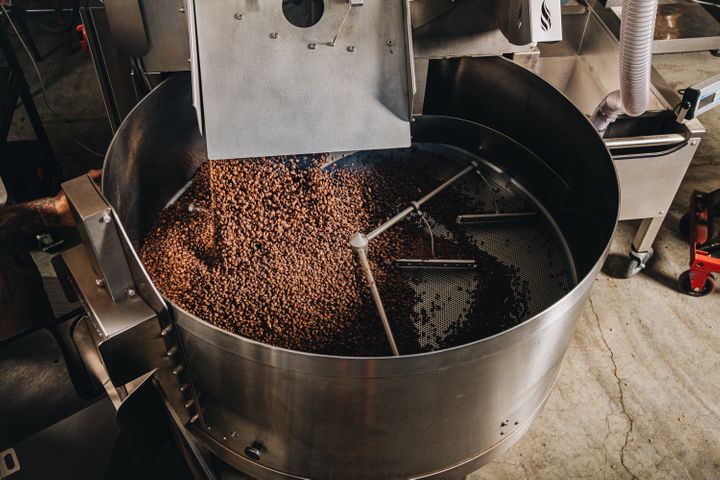Choosing the right oil makes all the difference between latkes that are golden and savoury and ones that end up oily and rancid. Using schmaltz, aka rendered chicken fat, is the traditional way to fry latkes, imparting a rich flavour to the potato pancakes. Canola and peanut oil are more popular and widely available, while some experts also tout olive oil, a more controversial pick. HuffPost interviewed several chefs to determine the best oil for frying latkes.
Option 1: Canola Oil
Grown from the rapeseed plant, this traditionally affordable oil has seen a recent spike in price due to the war in Ukraine. While canola is a type of vegetable oil, it’s not the same thing as vegetable oil. However, you can swap vegetable oil (typically a blend of soybean, corn, safflower or other oils) for canola in a pinch, since both have high smoke points (meaning you can cook it at a high temperature) and a neutral flavour.
Advertisement
Jeremy Salamon, the chef and owner of Agi’s Counter, a restaurant in Brooklyn, New York, told HuffPost that canola oil is usually his “go-to choice.”
“That’s what my mother uses, what my grandmothers used,” Salamon said. “It has a higher smoking point and lasts longer. You will get more flavor out of schmaltz, but canola is a sure thing.”
Phoebe Raileanu of Deli and Bakery in Sunset Valley, Texas, also uses canola. “Canola oil is the oil I grew up frying my latkes in. It makes for crispy, light latkes with a soft inside. Canola oil can also heat up to a high enough temperature to cook the whole latke through.”
Canola gets bonus points because you can reuse it. Simply strain the oil of any potato bits between uses. Shannon Sarna, the author of Modern Jewish Comfort Food, explained, “Just use a fine mesh sieve to strain out any pieces of food in the oil, store in a container at room temperature and use one to two additional times depending on how much cooking debris is left in the oil.”
Advertisement
Option 2: Peanut Oil
Often given a bad rap for flavouring foods with a peanuty taste, peanut oil “usually has a pretty neutral flavor, if not a little bit nutty,” said chef David Benstock from restaurant Il Ritorno in St. Petersburg, Florida. Refined peanut oil is often safe for those with nut allergies, as the oil is bleached and deodorised, removing the allergenic parts. Many restaurants and fast-food joints use peanut oil to deep fry, and it may be your favourite oil as a result.
Andrew Dana, the CEO and co-founder of Call Your Mother Deli in Bethesda, Maryland, told HuffPost, “Winner winner (shmaltz?) chicken dinner! I LOVE frying with peanut oil. I love to fry my latkes at a super high temp, and this oil holds up to the task. This allows me to make super crispy latkes without an overpowering oil flavour.”
Creating a light, crisp texture, peanut oil comes in second place for most chefs only out of an abundance of caution for those with nut allergies. As Raileanu explained, “peanut oil is the hippest oil to fry anything these days. It does make for a perfect texture on the latke, especially if you are deep frying.”
Option 3: Schmaltz
Traditionally used in Ashkenazi (or Eastern European) cooking, schmaltz is rendered poultry fat. Described as “liquid gold,” the lush and flavourful fat acts as a butter substitute for those who follow Jewish dietary laws, which forbid dairy and meat from being used in the same meal. Look for schmaltz at your local butcher shop or in the refrigerated section of some supermarkets.
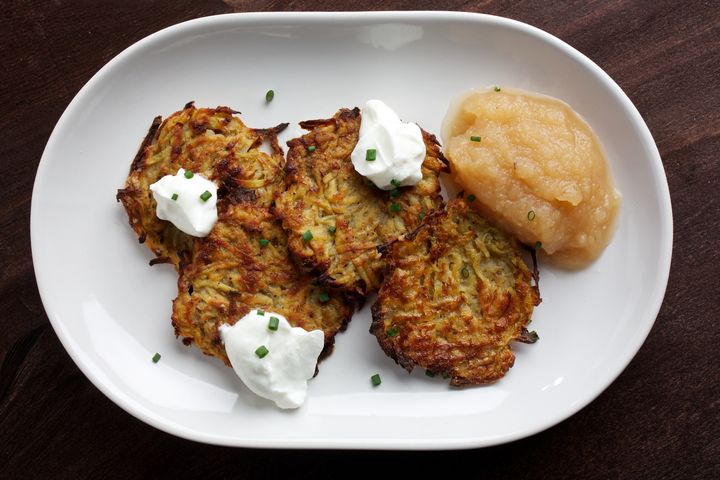
The Washington Post via Getty Images
Advertisement
According to Raileanu, this old-school option might not work for some followers of the faith. “Traditionally, latkes are eaten with applesauce and sour cream. I was raised in a kosher household, so this option would never work for us ― no mixing meat and dairy!”
While schmaltz is beloved for its rich flavor, deep frying with the fat could be too much of a good thing. “Sounds good in theory,” said Dana, “but it is just too much in practice! When I make latkes, I want to be able to eat at least six, and when fried with schmaltz, they get a little too rich for me.”
Looking for some of that umami schmaltz flavor without the heavy finish? Sarna recommends combining the oils for the best of both worlds, using two-thirds canola oil and one-third schmaltz when frying.
If you fry with schmaltz, be aware of the lower smoke point, which means your latkes can burn quickly. Novice latke makers may want to try another oil like canola.
Option 4: Olive Oil (Your Last Resort)
An unexpected oil for frying, olive oil is typically not recommended since it has a lower smoke point (176-210°C/350-410°F) relative to the other oils (200-230°C/ 400-450°F). (Basically, olive oil can’t be heated as hot as other oils without breaking down, which makes food taste burned).
Advertisement
If you’re frying with olive oil, keep the temperature low as latkes can burn and turn bitter, according to Salamon. It will also require a patient chef.
Raileanu cautioned: “I have used it once or twice in an emergency, but it has a lower burning point. So keeping the pan on low makes the latkes take forever, and frankly it’s not usually worth the wait.”
Frying typically requires larger quantities of oil, which can be prohibitive for pricey olive oil. Depending on your preference, the pungent and spicy flavor of olive oil imparted onto the latkes may be a pro or a con. Benstock considers it a positive: “The biggest pro of using olive oil is that it has amazing flavor and a nice viscosity for cooking.”
Looking to honour the OG Hanukkah story? Olive oil was likely the oil that lasted the eight days.
“On Hanukkah, we Jews eat things that are fried (ie, latkes, jelly doughnuts or sufganiyot ) to commemorate the miracle of the oil,” Raileanu said. “So if you are trying to stick to the script, use olive oil. But you’ll be the only one!”














